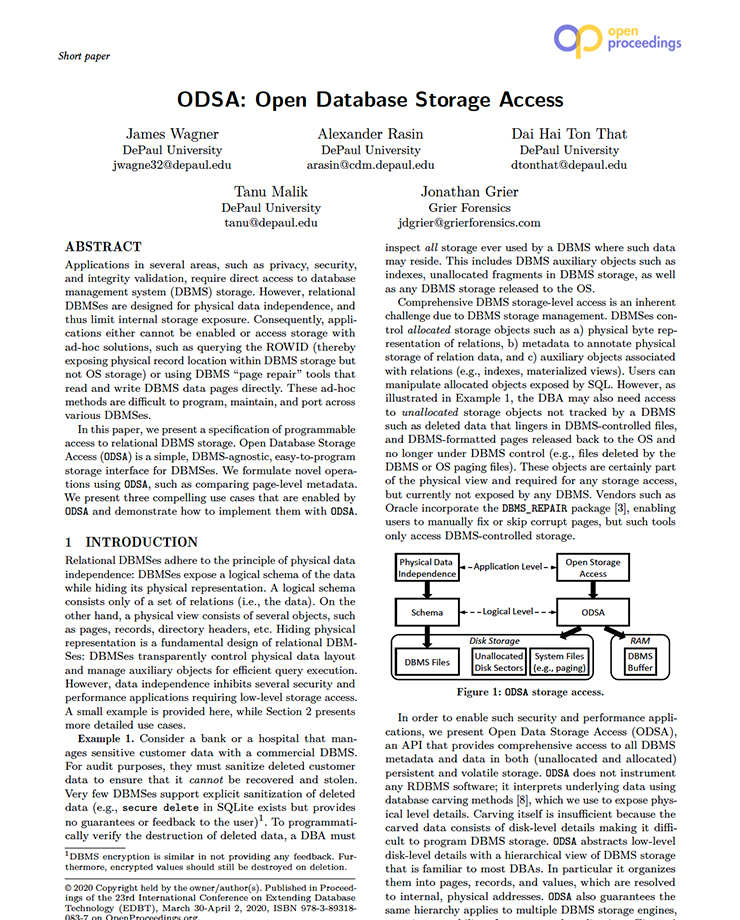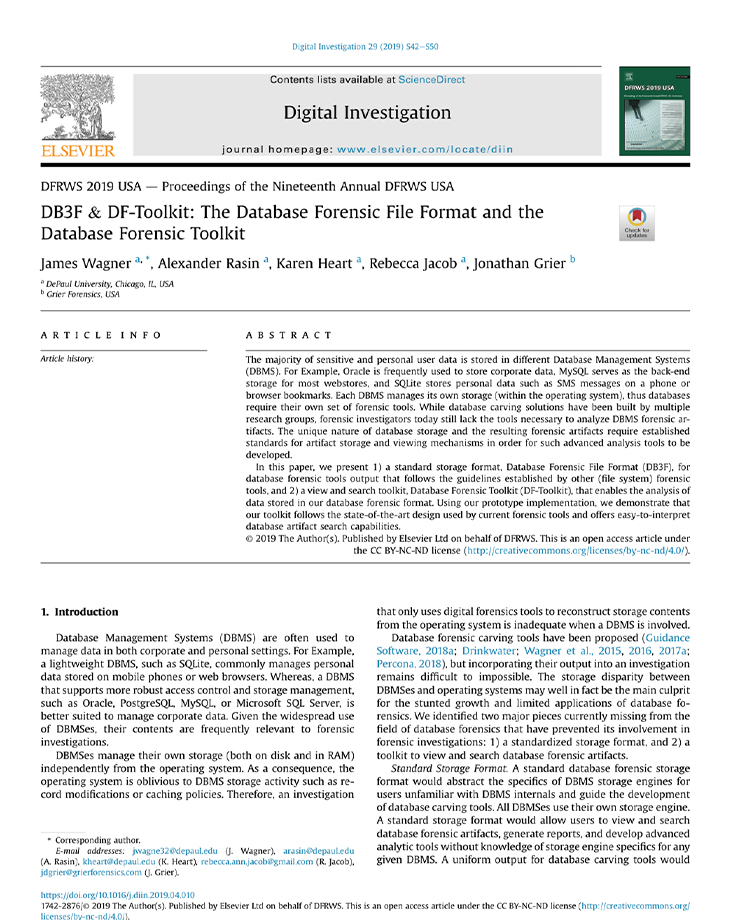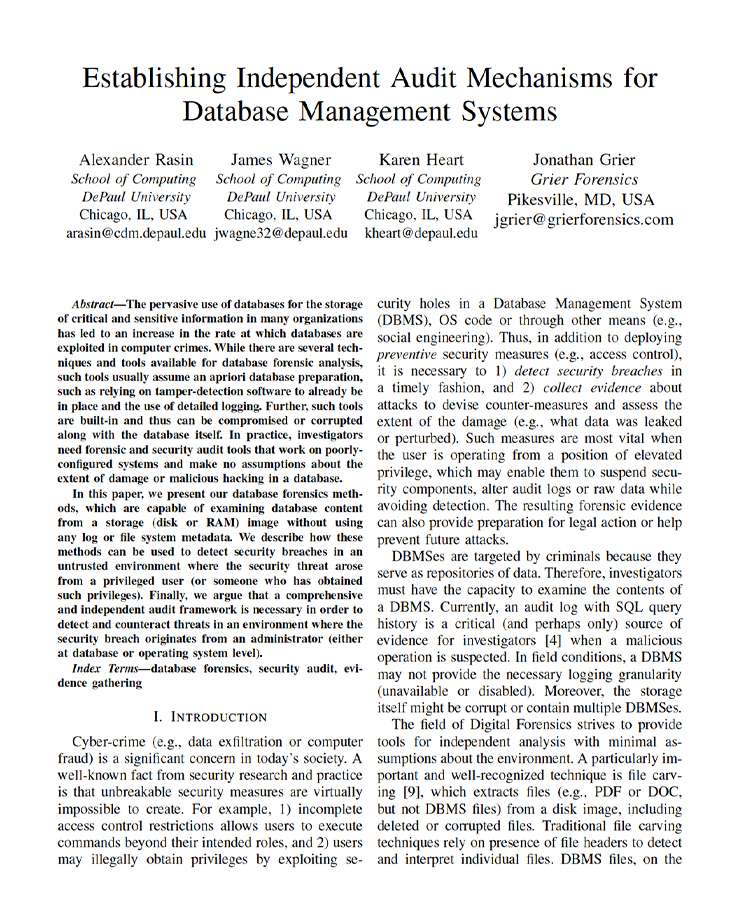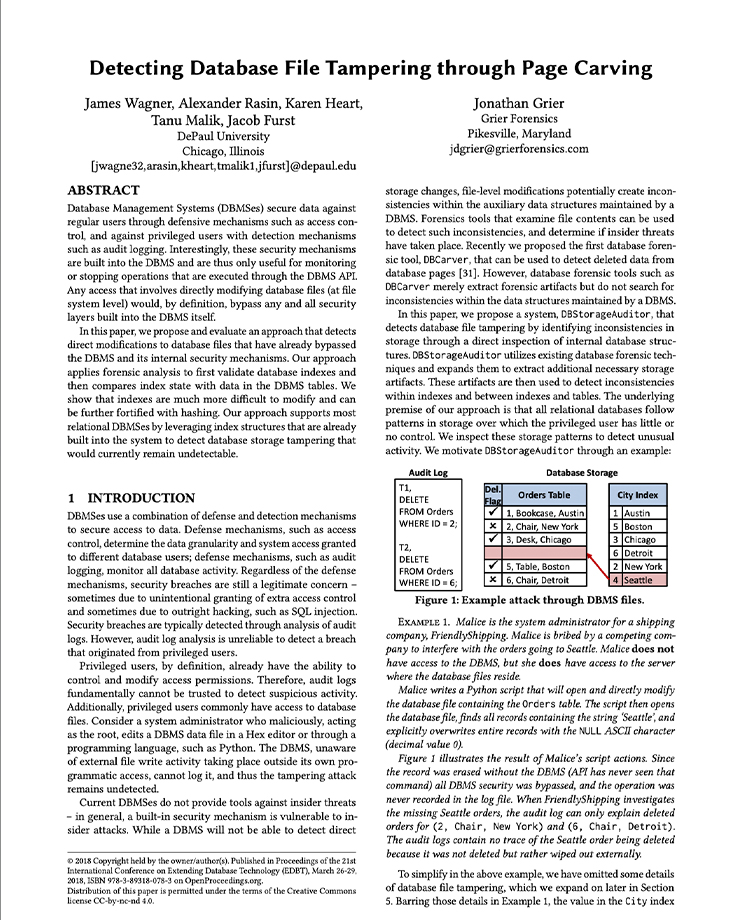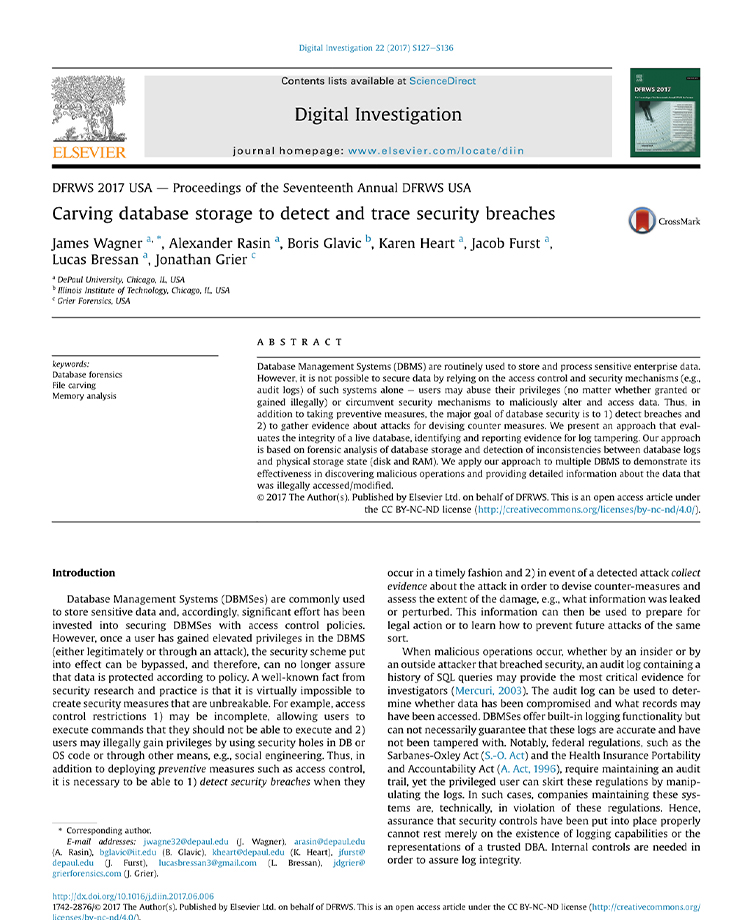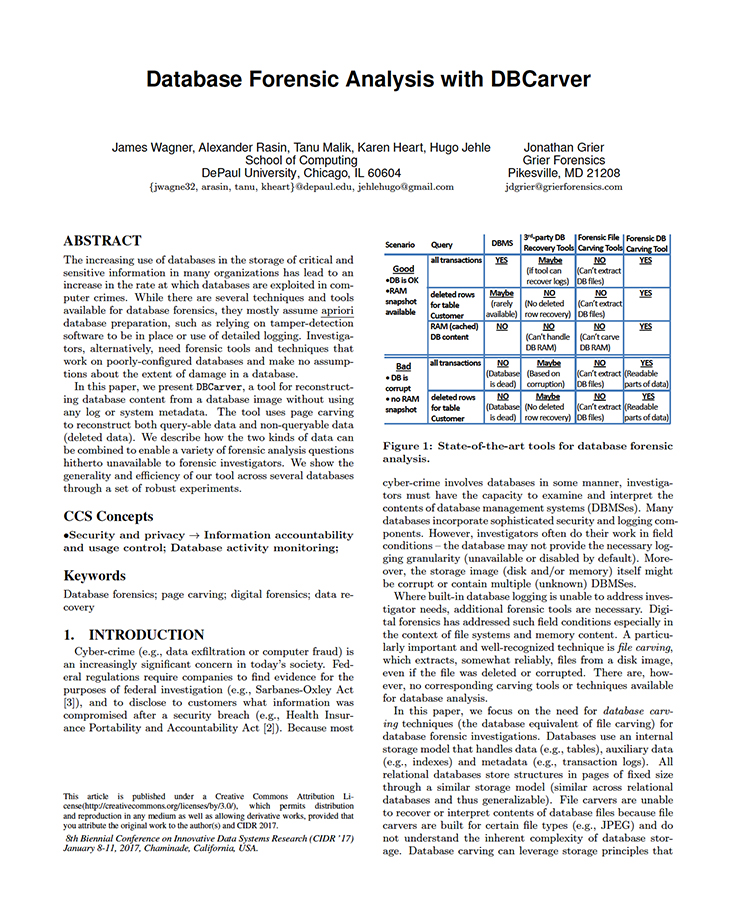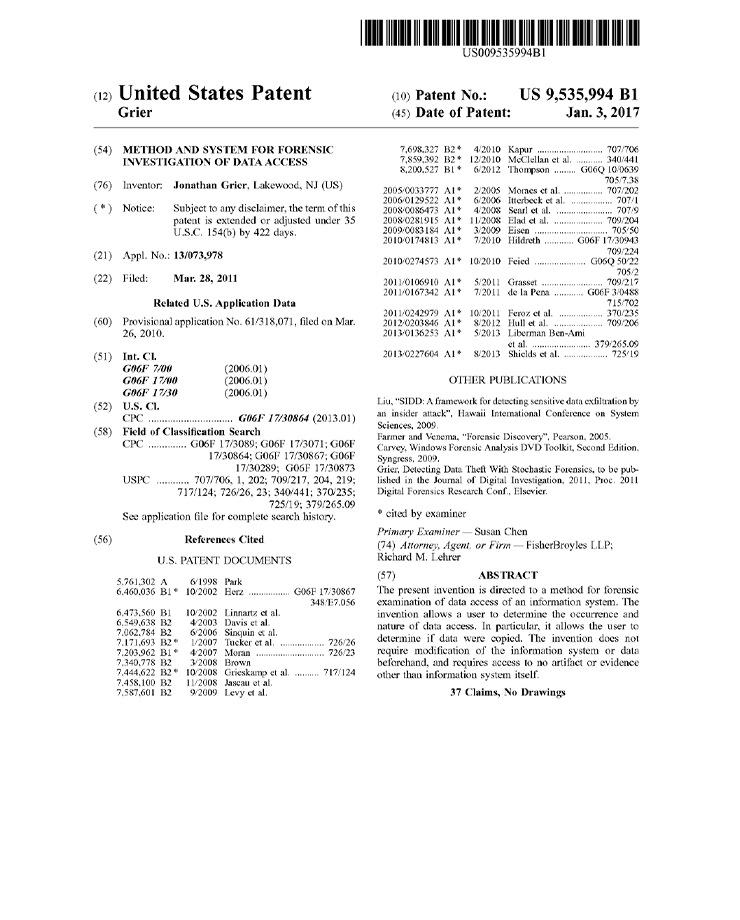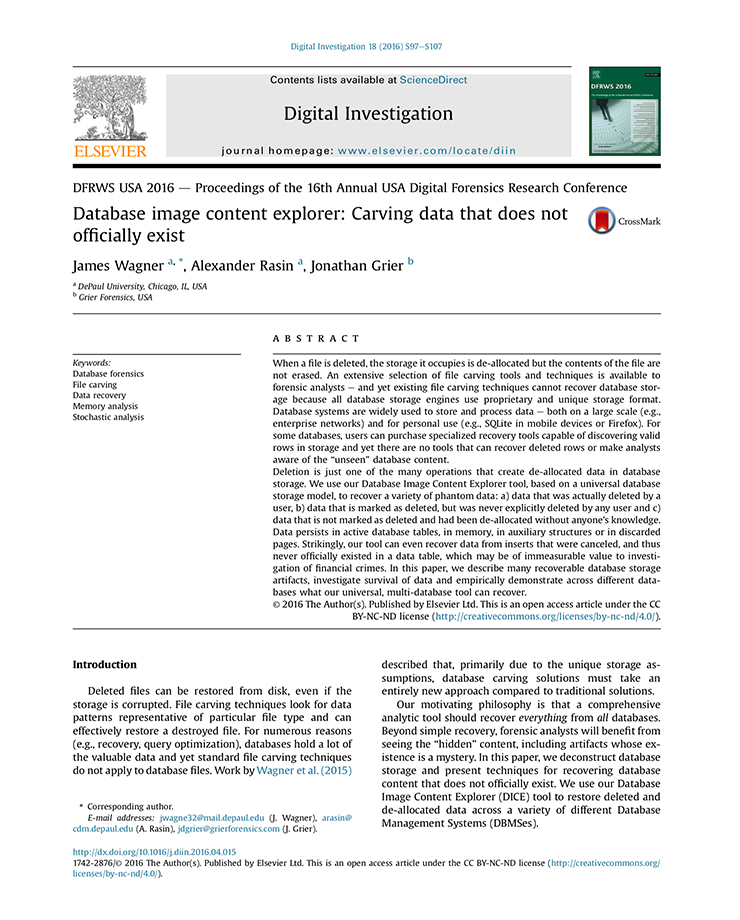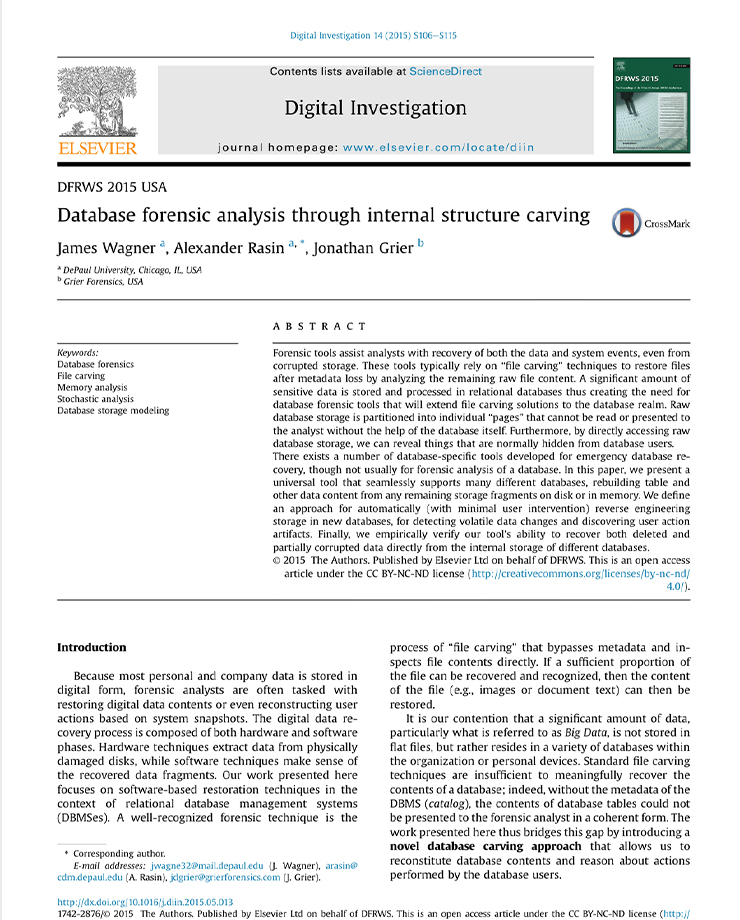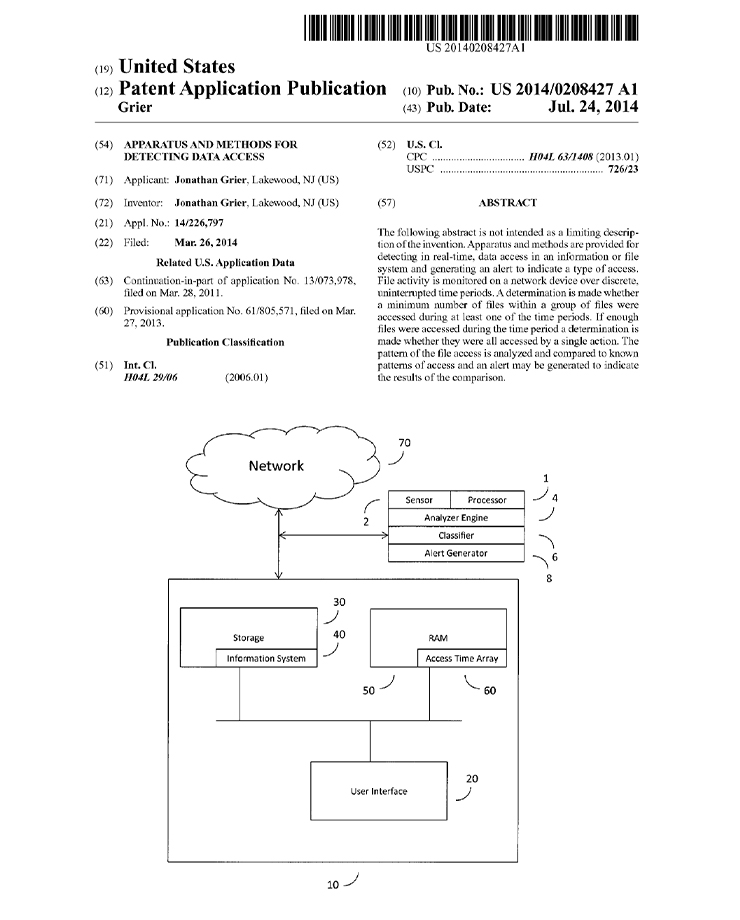ODSA: Open Database Storage Access
Applications in several areas, such as privacy, security, and integrity validation, require direct access to database management system (DBMS) storage. However, relational DBMSes are designed for physical data independence, and thus limit internal storage exposure. Consequently, applications either cannot be enabled or access storage with ad-hoc solutions, such as querying the ROWID (thereby exposing physical record location within DBMS storage but not OS storage) or using DBMS “page repair” tools that read and write DBMS data pages directly. These ad-hoc methods are difficult to program, maintain, and port across various DBMSes. In this paper, we present a specification of programmable access to relational DBMS storage. Open Database Storage Access (ODSA) is a simple, DBMS-agnostic, easy-to-program storage interface for DBMSes. We formulate novel operations using ODSA, such as comparing page-level metadata. We present three compelling use cases that are enabled by ODSA and demonstrate how to implement them with ODSA.

